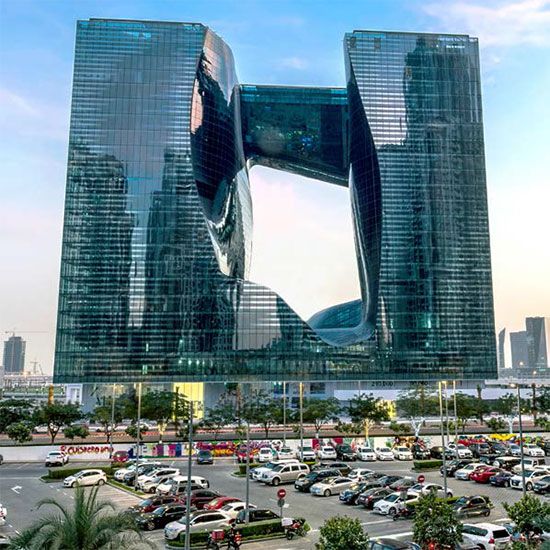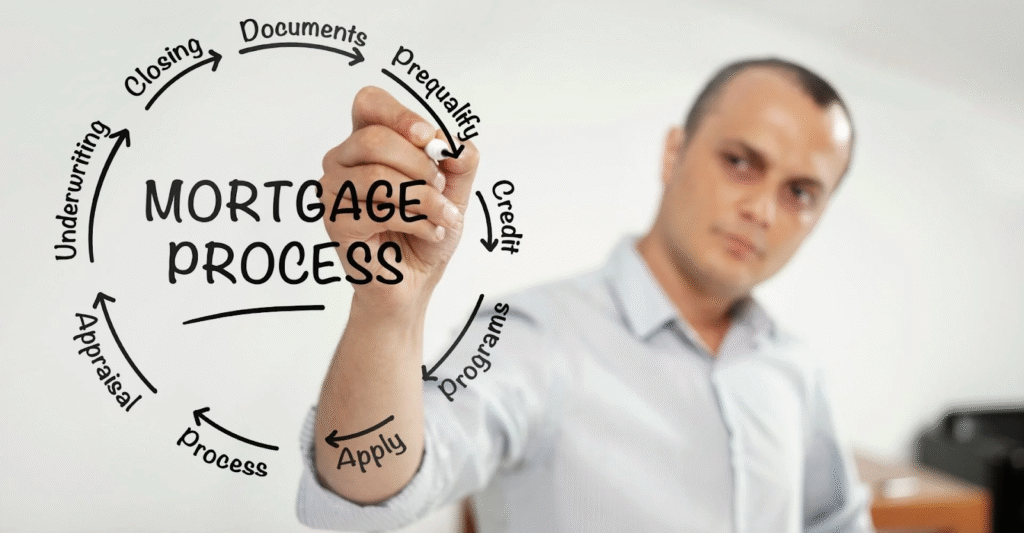Ever had that feeling that a certain kind of style was ‘too much’ – too cold and minimal, too bright or bold, too ruffled and that you wanted something in-between, something more balanced? In the design world, contemporary style formed a sort of answer to that issue.
How? Originating in the 1970s, Contemporary has also been called a ‘style chameleon’ – because it actually draws inspiration from various interior styles prominent from the decade onwards, but with a fundamental base. That base is a sleek, sculptural and clean look with an emphasis on open spaces, and a subtle sophistication.
However, the rest was flexible, and changed with the times. The variety of styles it can take inspiration from includes Modern – stark lines of concrete, glass and steel; Mid-Century Modern – minimal, sleek geometric furniture of moulded plastic, steel and glass originating in the 1950s; Art Deco – early 1900s decorative arts movement including streamlined, geometric and embellished designs; Futurism – think the clear-cut bold curves and non-patterned sculptural furniture inside a movie space hotel; Deconstructivism – shapes that are a bit dislodged from each other; Bohemian – a rustic, snug style.
Earlier, people used to very clearly identify what Indian architecture looked like or what the British architectural style looked like or Parisian, the Nordic style, or the Japanese style here. Now, we’re having a very Dubai style, and it’s becoming much more defined. One of the definitions is contemporary.
– Rincey Philip, founder of Rincey Philip interiors, Dubai-based interior decorating firm
Moreover, it is not a static style – it constantly changes and evolves, thus remaining ‘contemporary’. This means the contemporary 2000 style is vintage in comparison to Contemporary version 2022. In short, it is the ‘now’ of interiors.
Rincey Philip, founder of Rincey Philip interiors, Dubai-based interior decorating firm, says, “Earlier, people used to very clearly identify what Indian architecture looked like or what the British architectural style looked like or Parisian, the Nordic style, or the Japanese style here. Now, we’re having a very Dubai style, and it’s becoming much more defined. One of the definitions is contemporary.”

Designs like Museum of the Future, the large curved wonder in construction with contemporary Arab calligraphy on it by Killa Designs, The Opus by Pritzker-Prize-winning icon Zaha Hadid and even the stunning white and steel expanse of the Louvre, Abu Dhabi, by architect Jean Nouvel are examples of the contemporary gracing UAE’s streets.
A contemporary home
Bringing that idea home? Let’s go through the main philosophies that will help you with that journey.
In contemporary style interiors, less is more. It is very much a clean, and pared down design with silhouette and space as the priorities. By silhouette, I mean the shapes of the furniture, where abstract, boldly curving shapes and elegant, sculptural forms are everything.
Also, think minimal, decluttered and open spaces. At the same time, there is a range of colour palettes you can do with this style. You can go for a dark or light neutrals palette with shades of black, grey and beige tones respectively. Neutrals with pops of colour on the rugs, walls or artworks as accents also work well. Alternatively, you can go bold with solid colours, using colour blocking. As a mix of styles, you also have the freedom to be inspired by one style more than another.
Philip says. “The glam, the rustic, the industrial – all of these things had their time, but now it’s moved on from there. It’s moved to curvier shapes, minuter, minimalistic design and colours like pink and beige that are more calming and soothing to you.
“Contemporary doesn’t completely change, you always take a little bit of the previous times and you move with it.”
Contemporary Version 2022

Image Credit: Unsplash/Alyssa Strohmann
The pandemic has certainly changed our homes and lifestyles and Philip says that this shift has been clearly seen in the Contemporary of 2022. She summarises it in three changes – an emphasis on practicality, essentials and coziness.
Philip says, “One of the things that has changed post-pandemic is the striving towards only what is essential. In that sense, when you talk about contemporary, it has all the essential items in the home and is never overcrowded. Now, a lot of people give away a lot of things because they realise that it’s no longer necessary and they’re just holding on to too many things. Less travels – a lot of stuff went out; Less parties – a lot of stuff went out.
“Earlier, it was also about entertainment and things like that, but now it’s more about entertaining yourself.”
She also explains that the colours we favoured have changed due to working from home during the pandemic. Philip says,”There was a time before pre-pandemic when the colour gray was very popular because it was very cooling. People were in offices and stress was very high, and when they came home, they wanted to see greens, grays, and things like that.
“After, when the internet revolutionised working from home and the pandemic increased the people working from home, they started turning towards warmer, cozier colours – like beige and even millennial pink.”
Philip’s top 2022 predictions:
• Organic shapes and furniture
• Curved sofas and pieces
• Reeded patterns on wood and glass including thin pipe-like structures
• Recycled materials, for example art out of crushed glass and plastic
Step-by-step guide to your best contemporary home
1. Begin with statement rug or artwork
“People always begin with paint and end with rugs, but we do the opposite,” says Philip. The reason? She says that it can work as a grounding to form a colour in the room, and that a bold statement artwork can do the same. According to Philip, colours that are trendy right now are burnt orange, sage greens, and a warm blush pink.
2. Bold, abstract artwork
If you’re wondering about what kind of artwork works best in contemporary, Philip says, “Artwork has been a lot more abstract in contemporary styles. What excites and inspires you such as powerful quotes, sayings, and even colour-induced abstract art are popular.
“And photographs are still popular, obviously, like gallery walls – that never goes out of style, because people love looking back at memories.”
According to Philip, in the UAE, modern Arab calligraphy is also well loved. She says, “Pieces in different forms – sculptural art completely done by metal like this Arabic artist, where she’s written the whole calligraphy almost like barcode, and sometimes they are Quran verses as well and wordings that resonate with you and your values.”
Philip adds, “For example, it’s ‘exhale, inhale’, over or a bed, or things like that which are quirky, funny. A lot of people are now buying a lot of local artists’ art, because many people have started secondary hobbies post-pandemic, and they’ve come up with these beautiful mediums that they’re selling online directly to the buyer.”
3. Add neutral pieces and sculptural pieces
Philip says, “And then we develop neutral pieces over and above it. We have to look at the layout to know what fits, and work up from there with a neutral sofas.
“Right now, it’s got that form of, I would say, amoebic shapes that are unexpected.”
Finally, the power of striking statement furniture pieces cannot be overstated. Philip says, “Right now, curves are huge in home design fashion – any kind of curves as opposed to straight lines. For example, curvy coffee tables – they’re very fluid-like very interesting sculptural pieces on its own. If you have a few interesting pieces like that in your home, it just makes a good enough space and you don’t have to add a lot of elements.”
4. Adding accents by armchairs, cushions and walls

Image Credit: Unsplash/Collov Home Design
This is when we begin to layer the room in an aesthetically cohesive way by pulling out colours from your statement rug or artwork and expressing them in other parts of the room. The dominant and least dominant colours are the most important.
Philip says, “For example, if there’s some abstract art full of colour – and then you pick out the dominant colour, say royal blue. Then you would pull out the royal blue in an armchair, or it can be two armchairs. If that’s too much for you, you can still go neutral and then add royal blue cushions.”
Then, she adds, “The least dominant color in the art or in the rug, say the background colour is rustic pink, warm blush – you pull out the colour and put it on the walls.
“So that it looks more harmonious and cohesive. So, when you see it together, it all makes sense.”
Even your cushion can be designed boldly and have quotes and sayings on them.
5. Metal, glass, marble…

What materials should you use? Philip says that metal, glass, marble, brass and wood in sculptural forms, as well as mixed medium pieces are seen widely.
She says, “That’s very common, and even replacing glass structures with wood slats, to go from a cooler contemporary to a warmer contemporary style right now.
“A lot of mixed materials as well, to make it interesting – they mix wood flooring with maybe marble on the staircase, or start off a certain area with marble, and the remaining areas are wood.”
For upholstery, satins, velvets or natural textures such as linen, cotton, and sometimes silk can be used.
6. Go green

Image Credit: Unsplash/Lakeisha Bennet
Philip says, “Greenery and biophilic materials are big – in Boho, it’s hanging plants, and in modern, solid big pots with big plants. You can have a set of plants strewn over the house – that’s also pretty huge because people are spending a lot of time indoors, so for the air quality, they bring in a lot more plants.”
7. Patterns?
With its emphasis on sleekness, Philip says that circles, squares and lines are the foundational patterns of contemporary style. She says, “I would say circles and squares, as simple as that. No diamonds, not zigzags and other shapes and forms.
“You have a lot of circular shapes around mirrors, and on a square wall – you would have round shapes pretty often.”
What to avoid
• Deep, rich sofas
• Too much raw wood
8. Ceiling ornament on certain conditions

According to Philip, a ceiling is designed only if it’s either very tall or very low. Philip says, “When it’s really low, you want to get your eye to draw up to the ceiling by doing a feature, and when it’s really high, you want to highlight this fact and give that ‘wow’ factor.”
For example, you can add a strip of concrete structure behind a sofa, and take it to the ceiling to draw your eye up, or use slats for a reeded accent to your ceiling. However, she adds, it’s typically left plain and the light allowed to shine. She says, “Sometimes there are layers of light in them, just to add the level of drama without making it too obvious or loud.”
9. Lighting as the jewel of the room

Image Credit: Unsplash/Qinghong Shen
“In contemporary, a lot of the lighting is very defined and sculptural; it’s like an art form on its own. The lights are very funky, very different shaped and they stand out. There’s more movement with light – different layers of lighting is very important,” says Philip.
She adds that we can use cane-like materials, wood-like materials, crystals, pendant lighting in brass or stainless steel for example, and this where we add the glam (or not).
10. Finally, windows
Familiar with the tall living rooms of villas where an abundance of natural light falls through huge windows into understated, contemporary interiors in the morning? This is the typical window-style of Contemporary, where focus is on the design of the frames themselves and curtains are not used.
According to Philip, shades are very common, and if more privacy is required, curtains of a natural material like linen, cotton and rarely, silk that are S-taped or wavefold design are used.





More Stories
Chalet House Style Ideas Perfect for Cozy Retreats
Penthouse House Style Inspirations for Modern Luxury
Victorian House Style Ideas That Radiate Elegance